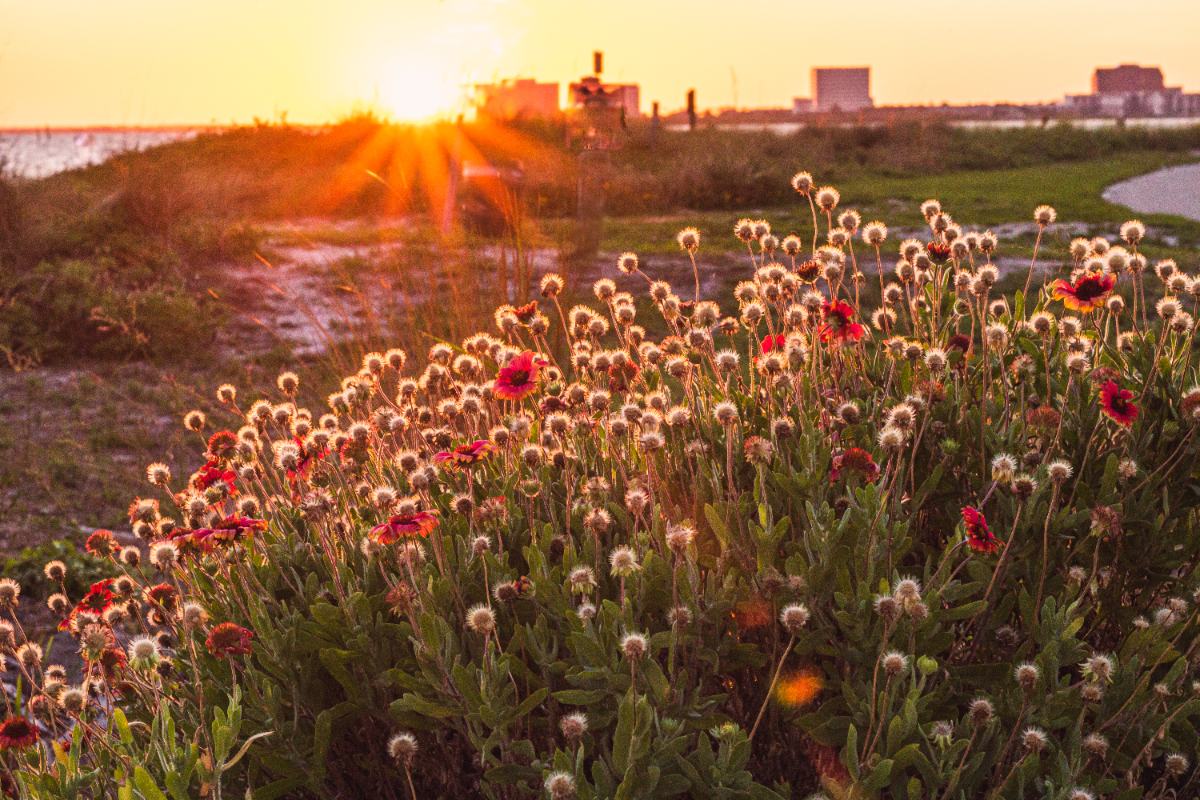
Spring is a critical time for Tampa lawn care. Unlike in northern cities, Tampa’s warm-season grasses stir to life earlier, creating unique challenges that require specific approaches like fertilizing in early-April, mowing at a high setting, and attacking certain weeds and pests that plague Bay area lawns.
Follow these 12 spring lawn care tips and your Tampa lawn will get off to a fast start and stay strong and beautiful year round.
- Get Out the Rake
- Resume Mowing Around Mid-March
- Inspect Your Sprinkler System
- Water Deeply But Infrequently
- Know Tampa’s Watering Restrictions
- Test Your Soil, and Add Soil Amendments
- Fertilize According to Local Rules and Regulations
- Aerate, if Necessary
- Protect Your Lawn From Pests
- Prevent Lawn Diseases
- Control Weeds
- Overseed Bare Spots
Get Out the Rake
Winter isn’t harsh in Tampa, but debris still piles up. Rake fallen leaves, thatch, and other buildup that smothers your grass and harbor lawn pests. Thatch less than half an inch thick is beneficial, but anything more than that can prevent water and nutrients from reaching the roots.
See Related:
Resume Mowing Around Mid-March

Don’t be too eager to start mowing. Wait until the grass starts growing well – usually around the second or third week of March. Cutting too early can weaken awakening grass during a time when it is still a bit vulnerable.
When you resume mowing, leave grass a little longer than you would in the summer. Cutting it very short stresses it, and you don’t want to do that when it’s coming out of its winter dormancy.
Mowing heights and frequency depend on the type of grass you have on your lawn. Here are the recommendations for popular grass types in Tampa during the spring.
| Turfgrass Species | Optimal Mowing Height (Inches) | Mowing Frequency (Days) |
| St. Augustinegrass | 3.5 to 4 | 5 to 14 |
| Zoysiagrass | 1 to 2 | 10 to 14 |
| Centipedegrass | 1 to 2 | 10 to 14 |
| Bermudagrass | 0.5 to 1.5 | 3 to 5 |
| Bahiagrass | 3 to 4 | 7 to 17 |
| Seashore paspalum | 1 to 2 | 5 to 7 |
Finally, before your first mow of the season, make sure to sharpen your mower blades for a clean cut. Ragged cuts expose grass blades to disease. If the blade has multiple chips or can’t be sharpened, replace it. Check out our article on How to Sharpen Mower Blades for more information.
See Related:
- How to Care for St. Augustinegrass
- Growing Zoysiagrass: Everything You Need to Know
- Centipedegrass Lawn Maintenance Guide
- Bermudagrass Guide: Types, Traits, and Care
- Bahiagrass Lawn Maintenance Guide
Inspect Your Sprinkler System
Before the mercury soars, be sure your sprinkler system is functioning correctly.
- Place tuna cans around your lawn, and run your system to see if the sprinklers are spreading water uniformly. If some cans have more or less water than others, check the sprinkler heads for clogs and adjust or reposition them for better coverage.
- Look for visible leaks in sprinkler heads, pipes, or hoses. Even a minor leak can waste gallons of water.
- Replace damaged sprinkler heads and nozzles.
Water Deeply But Infrequently
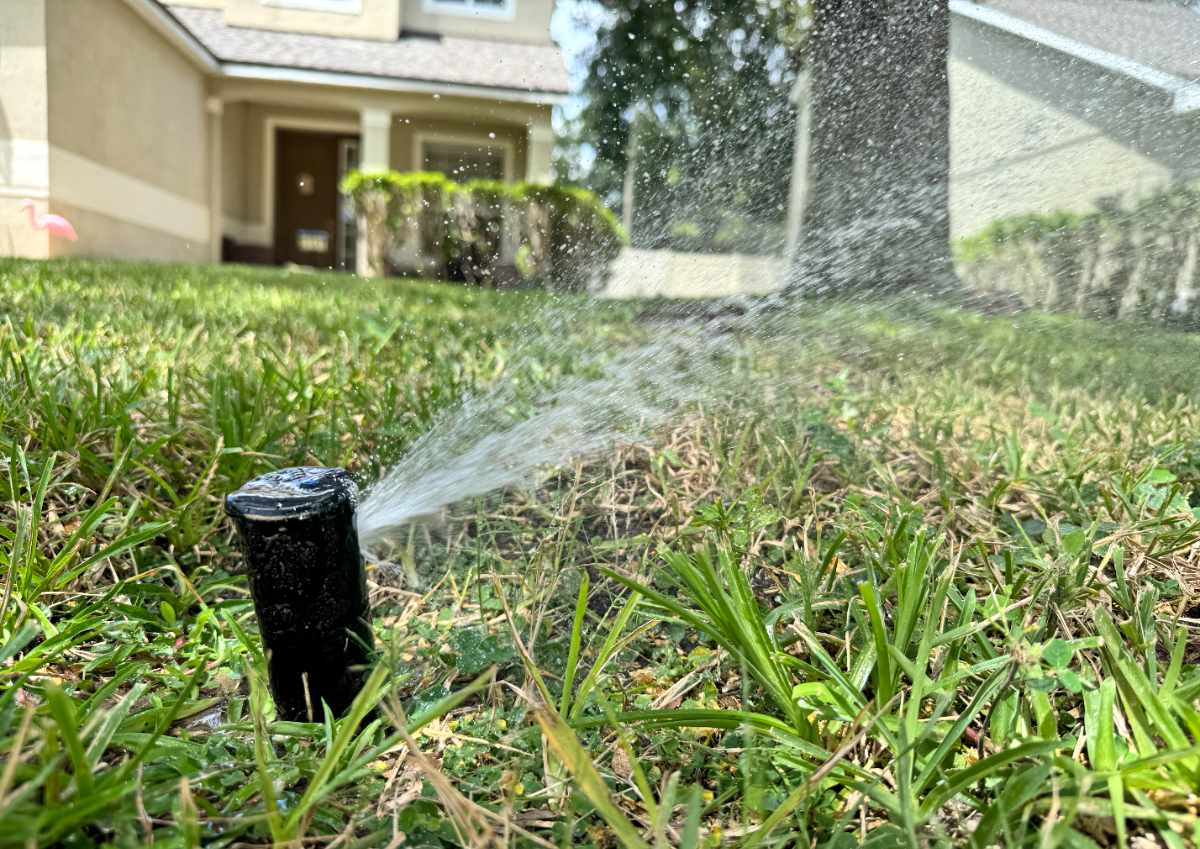
Lawns need 1 to 1.5 inches of water a week, particularly in the spring. In Tampa, Mother Nature generally supplies only about 2 to 2.5 inches per month (roughly half an inch per week on average) in March, April, and May, so you’ll need to make up the balance with irrigation.
It’s better to water your turf deeply once a week than to water lightly every day. This strategy is all about root growth. A well-developed root system makes for healthy grass, and deep watering encourages roots to spread and grow deep in search of moisture.
Here’s how much water your Tampa lawn needs in spring:
| Type of Grass | Watering Requirements (Per Week) |
| St. Augustinegrass | 1 to 1.5 inches |
| Zoysiagrass | 1 inch |
| Centipedegrass | 1 inch |
| Bermudagrass | 1 inch |
| Bahiagrass | 0.5 to 0.75 inches |
| Seashore paspalum | 1 inch |
Also, to get the most out of your irrigation, water early in the day. “Watering before 9 a.m. helps reduce evaporation and gives grass time to dry out during the day, preventing fungal diseases,” says Sergio Beltran, owner of Gio’s Lawn and Landscaping Service in Tampa.
Know Tampa’s Watering Restrictions
Tampa has year-round water restrictions set by the Southwest Florida Water Management District (SWFWMD), and it’s important to follow them to avoid fines.
If you use an automatic irrigation system, you can water your lawn only once a week, and only before 8 a.m. or after 6 p.m. Here’s the schedule based on the last digit of your address:
- 0 or 1: Monday
- 2 or 3: Tuesday
- 4 or 5: Wednesday
- 6 or 7: Thursday
- 8 or 9, or no address: Friday
You can irrigate your lawn with up to ¾ inch of water per irrigation zone for no longer than one hour.
Even for new lawns, watering between 8 a.m. and 6 p.m. is prohibited. The Tampa Bay area government recommends following the 30-day establishment schedule by Florida’s Institute of Food and Agricultural Sciences (IFAS) for new turf.
These restrictions don’t apply if you hand-water or use micro-irrigation systems to water landscapes like flowers, shrubs, and vines.
Check out the official City of Tampa Water Restrictions and Tampa Bay Watering Tips articles for more information.
Test Your Soil, and Add Soil Amendments
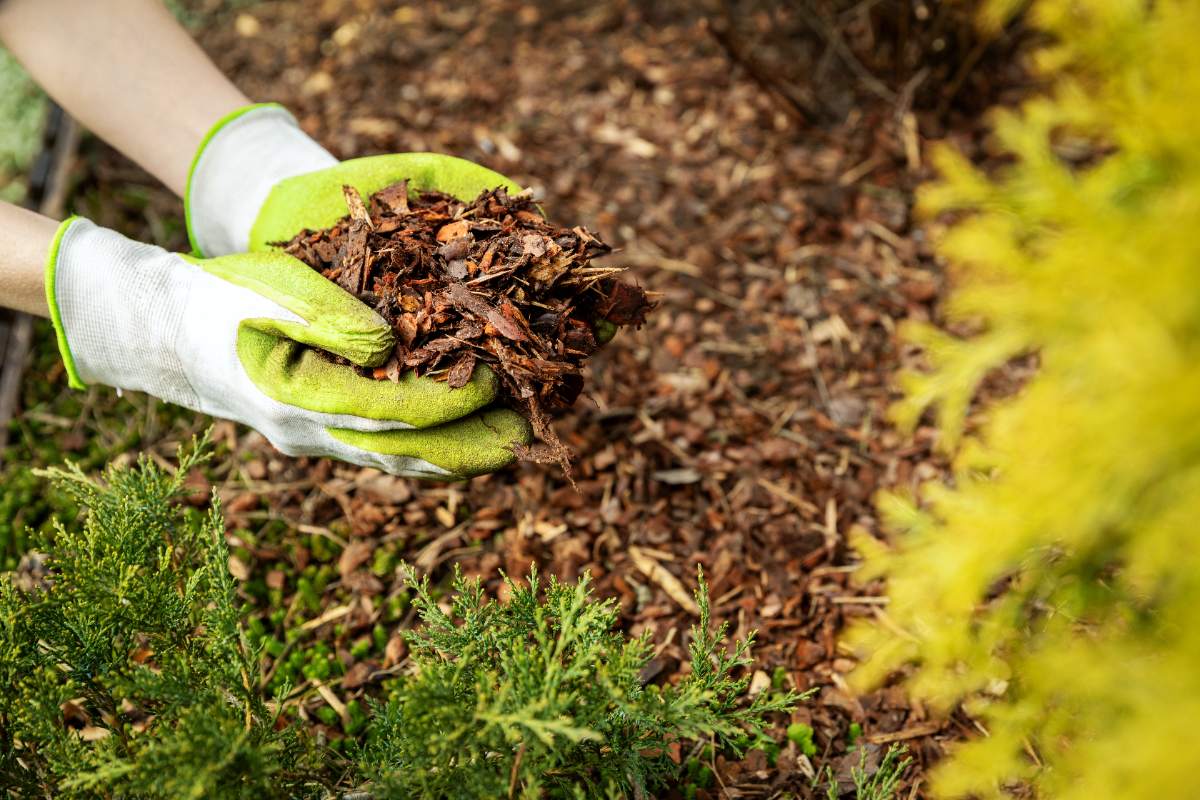
Most turf grasses thrive in slightly acidic soil with a pH between 6.5 and 7. This pH range helps roots absorb nutrients more efficiently and also limits thatch buildup.
The Tampa Bay area has mostly Myakka soil, which is sandy, wet, and acidic, but you can amend it to make it richer.
Test your soil to see if it has the right pH and nutrient levels. You can buy a DIY soil test kit from your local home improvement store or send a sample to the local County Extension Office.
If the pH is below 6.5, treat your soil with lime. If it’s over 7, add sulfur. The test also tells you the soil composition so you can add a proper fertilizer to correct any deficiencies.
Myakka soil holds only about an inch of water in the root zone, but you can improve it with these organic amendments:
- Compost: Decomposed organic matter that improves soil structure and water retention. It also provides slow-release nutrients and protects the soil surface from wind and water erosion.
- Biochar: A charcoal-like material made by burning forestry and agricultural waste. It helps improve both water and nutrient retention. For best results, I recommend mixing it with compost before applying it to your lawn.
- Mulch: Organic mulch like shredded leaves, grass clippings, or wood chips helps reduce evaporation and adds nutrients to the soil as it breaks down.
- Cover crops: Grow seasonal plants like clover, ryegrass, or oats during the off-season to improve soil structure, boost water retention, and reduce erosion.
Check out our article on How to Amend Sandy Soil for more.
Fertilize According to Local Rules and Regulations
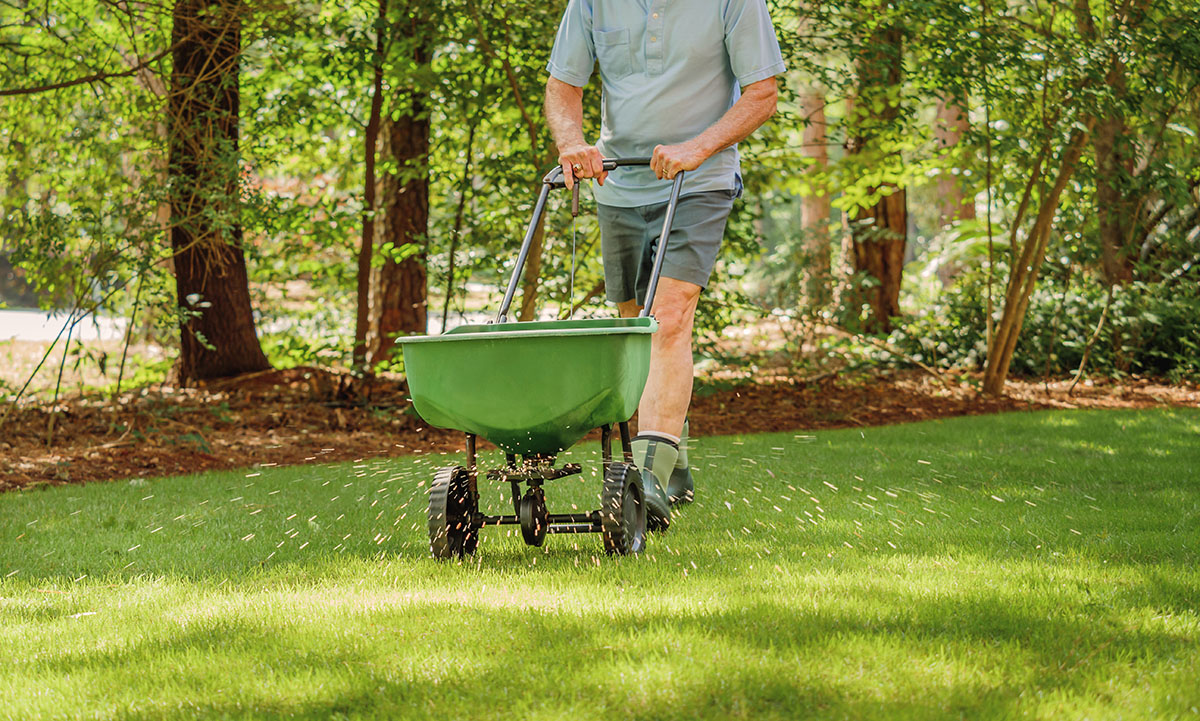
Spring is a good time to fertilize your lawn because your turf is actively growing and ready to gobble up nutrients as it emerges from winter dormancy. Here are three tips to help you choose the right lawn fertilizer:
- Use products labeled for urban turf: Make sure the fertilizer matches the type of grass you have.
- Choose a low-phosphorus formula: Soil in the Big Guava is already rich enough in this nutrient.
- Go for a slow-release product: Slow-release fertilizers provide nitrogen at a low rate, so grass can absorb it as it grows and help prevent nitrogen from entering waterways, which can lead to harmful algae blooms.
See Related:
- How to Fertilize Your Lawn
- Slow-Release vs. Quick-Release Fertilizer
- Best Fertilizers for Grass
- How Much Does Lawn Fertilization Cost in 2025?
- When to Fertilize Your Lawn
Aerate, if Necessary

Aeration relieves compacted soil by perforating the ground with thousands of holes that make it easier for oxygen, water, and other nutrients to reach the roots. Late spring is the ideal time to aerate warm-season grasses, as they are entering their peak growing season.
Myakka soil compacts less frequently, so it’s enough to aerate your lawn every two to three years. I recommend performing a screwdriver test to determine if you have compacted soil. Slide a screwdriver a couple of inches into the soil. If it slides in easily, your soil is good. But if there’s resistance, you have compacted soil.
Check out our article on How to Aerate Lawn for more information.
Protect Your Lawn From Pests
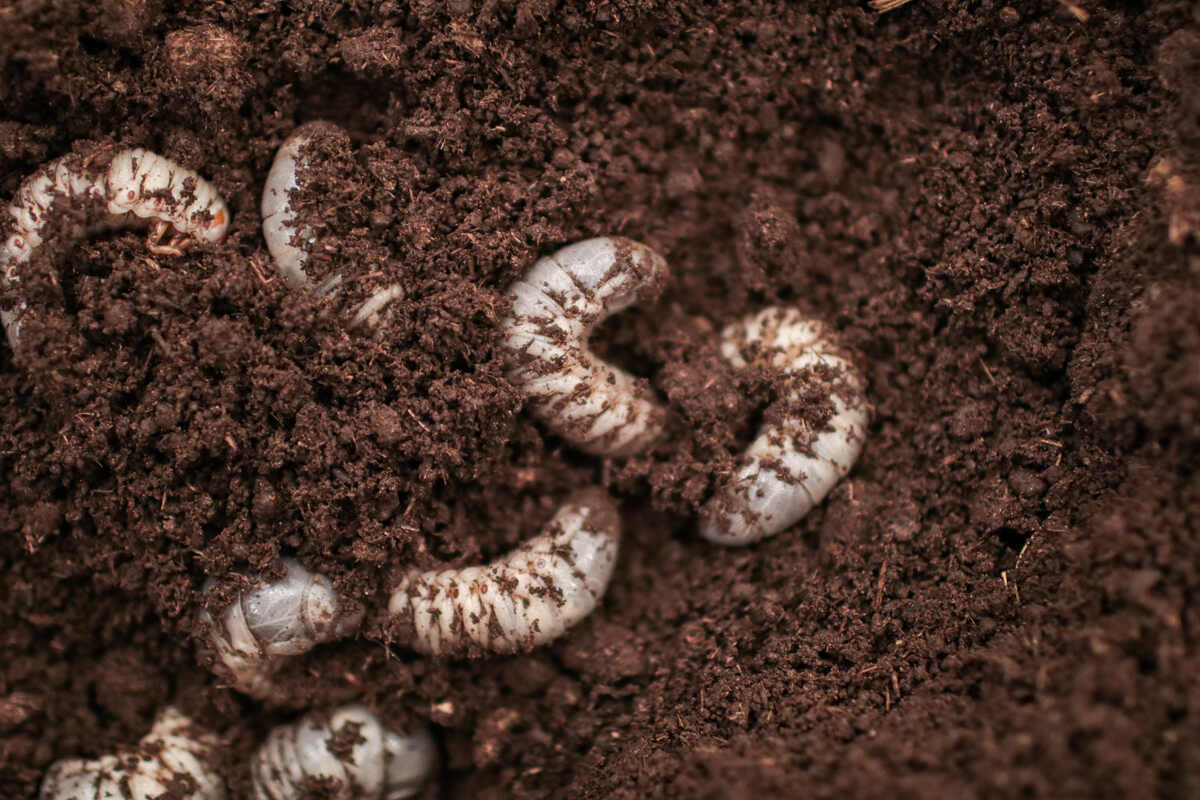
Pests love Tampa lawns, especially as temperatures rise. Here are some aggressive bugs to watch out for:
- Chinch bugs
- Mole crickets
- Armyworms
- White grubs
- Sod webworms
To prevent and control pests in your lawn:
- Do a thorough spring lawn cleaning: Remove branches, twigs, animal residues, and any other debris that can become shelter or food for pests.
- Dethatch the lawn: A thick thatch layer can attract pests and create a perfect spot for mildew and fungus to grow. Dethatch at least once a year to keep your lawn healthy.
- Inspect the lawn for signs of pests: Early detection makes pest control easier. Watch for symptoms like thinning grass, brown patches, tunnels in the soil, or plants that pull up easily from the ground.
- Use targeted pesticides: If the infestation is severe, apply pesticides for that specific pest to eliminate them.
- Natural pest control: Natural predators like ladybugs and lacewigs, or beneficial nematodes can help get rid of pests.
Prevent Lawn Diseases

Spring in Tampa creates perfect conditions for lawn diseases to spread quickly. Here are some common diseases to watch out for:
- Brown patch fungus (November to May): Triggered by excessive soil humidity when temperatures are under 80 degrees. Infected patches turn yellow, reddish-brown, brown, or straw-colored and eventually die.
- Gray leaf spot (late spring to early fall): Primarily affects St. Augustinegrass and is triggered by prolonged rainfall and compacted soil with excessive nitrogen. It creates small olive-green to brown pinhead-sized spots that develop into circular or oblong tan to brown spots with dark-brown margins.
- Pythium root rot (all year round): Caused by wet soil, poor drainage, or improper irrigation. This disease rarely kills the grass outright, but it can thin the lawn and cause it to turn yellow, light green, or brown.
To minimize the chances of developing one of these diseases, water in the early morning, mow at the recommended height, and dethatch as needed.
Control Weeds

Tampa Bay lawns are weed magnets. Apply pre-emergent herbicides in early spring to prevent broadleaf weeds. For grassy weeds, the ideal time is late spring or early summer. As a general rule, apply pre-emergent herbicides two to three weeks before weeds are expected to appear.
If weeds have already started to show up and there are only a few, you can pull them by hand. Use post-emergent herbicides for weeds that are difficult to eliminate manually.
Check out our articles on How to Apply Pre-Emergent Herbicide and When to Apply Post-Emergent Herbicide for more information.
Overseed Bare Spots
Overseeding is a great way to fix patches on existing lawns. April to May is the best time to seed warm-season grasses in Tampa. It gives the new growth an entire season to develop before meeting the cold season.
If you have shade trees on your property and notice thinning grass under their shade, replace the turf with native ground covers or spread mulch near their trunks. Most warm-season grasses don’t thrive in partial shade.
Keep Your Tampa Lawn Fresh and Healthy

Spring in the Tampa Bay area is perfect for new growth, fresh landscaping ideas, and preparing your yard for another beautiful season.
Mowing, watering, fertilizing, aeration, and preventing weeds and pests are just part of the spring lawn care tasks for a homeowner in the Tampa Bay area. If you don’t have enough time to do it all yourself, no worries. LawnStarter’s Tampa lawn care pros have you covered and will get your grass ready for the summer.
We also have local lawn care pros in St. Petersburg, Apollo Beach, Valrico, and across the Tampa Bay area. Call, click, or book mowing in our app.
Main Image: Blanket flowers in springtime at Cypress Point Park in Tampa. Photo Credit: steven / Adobe Stock